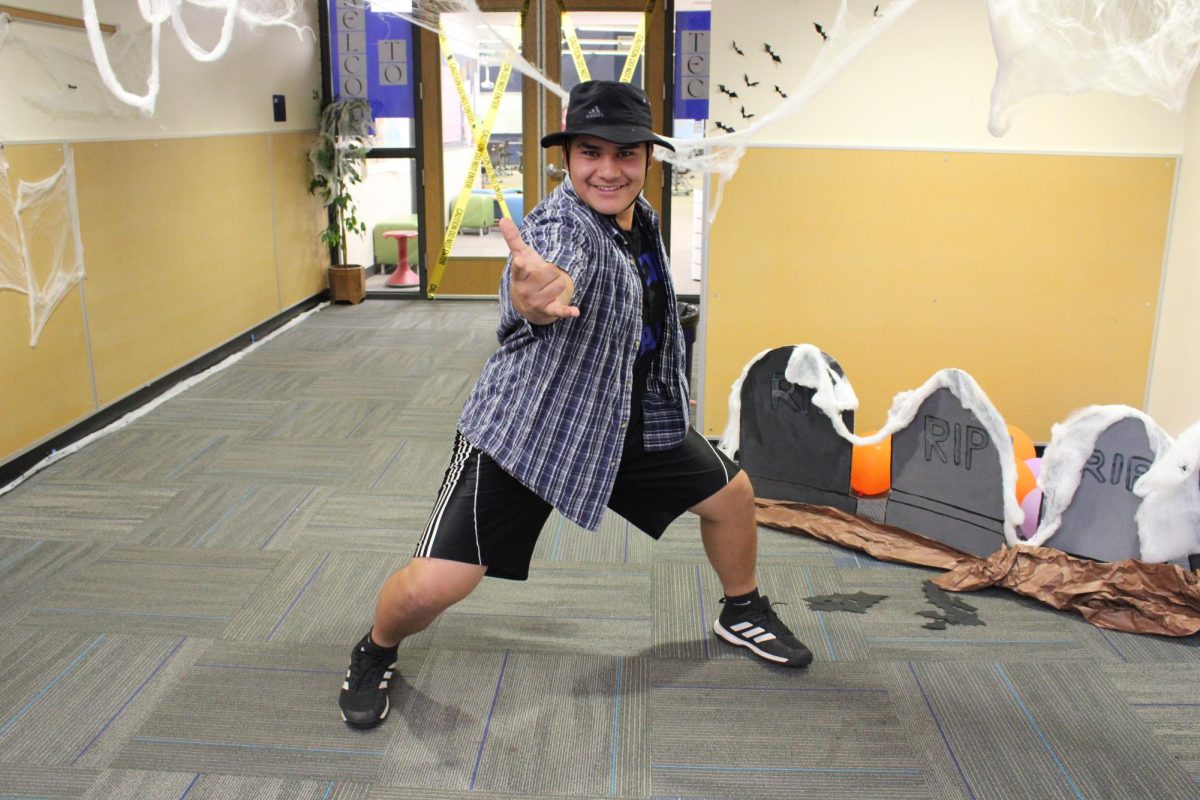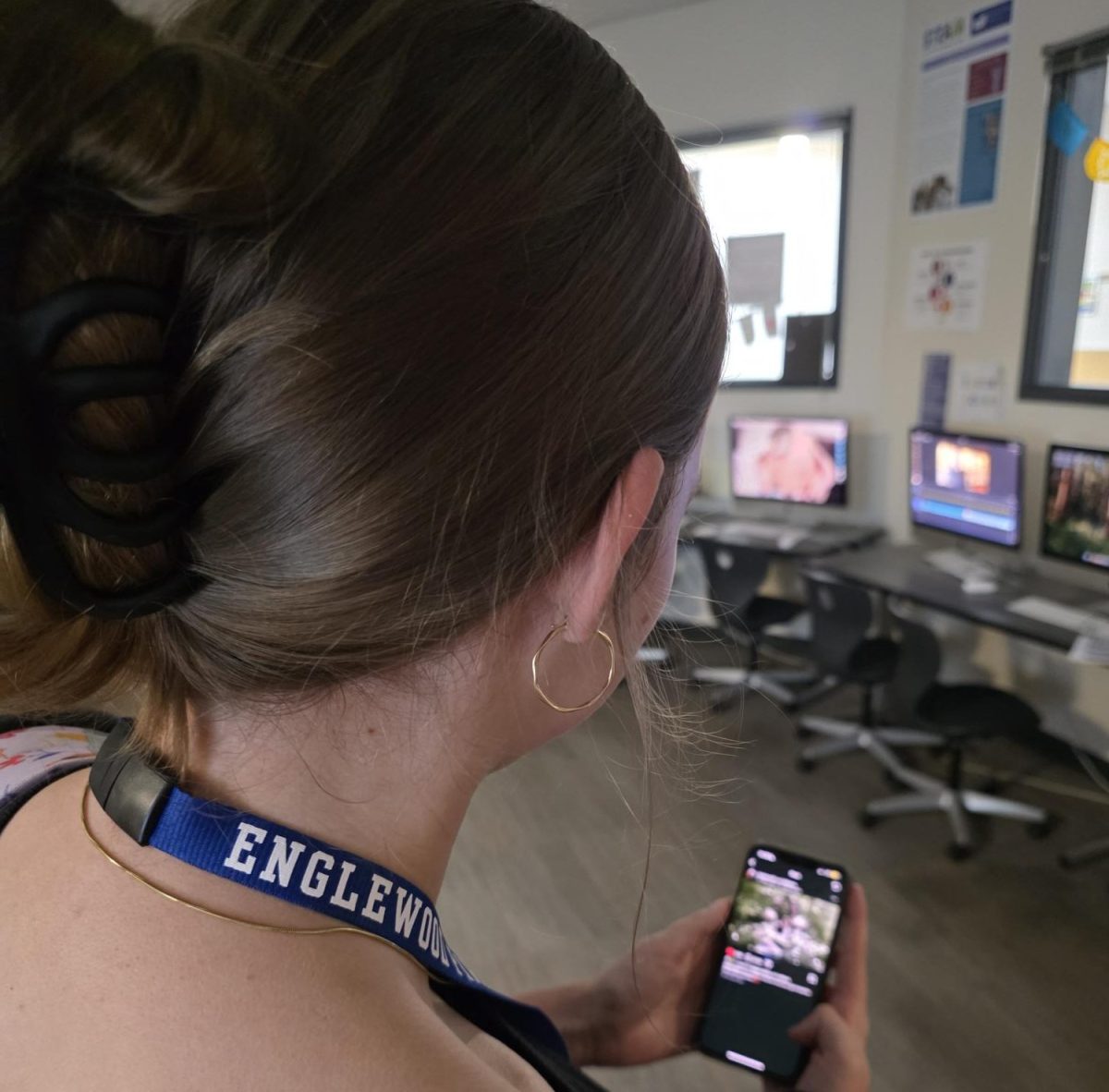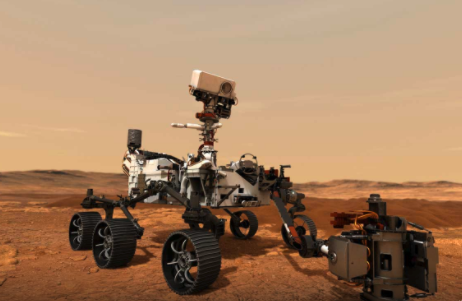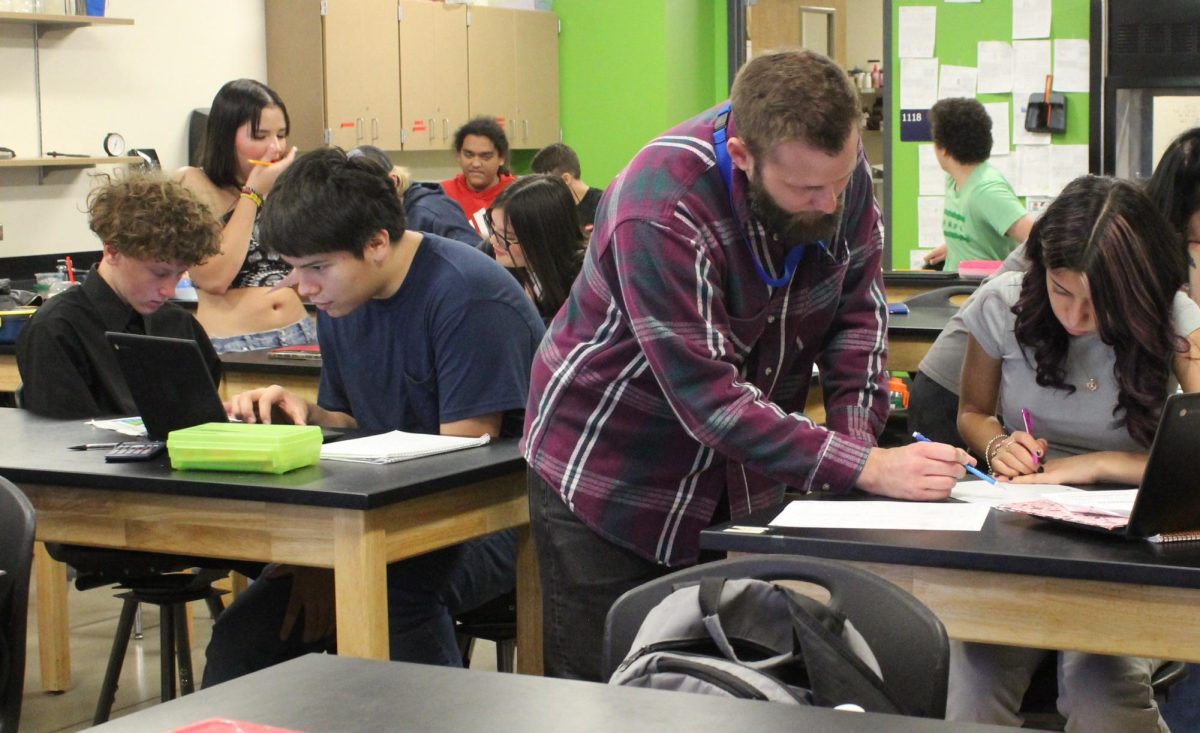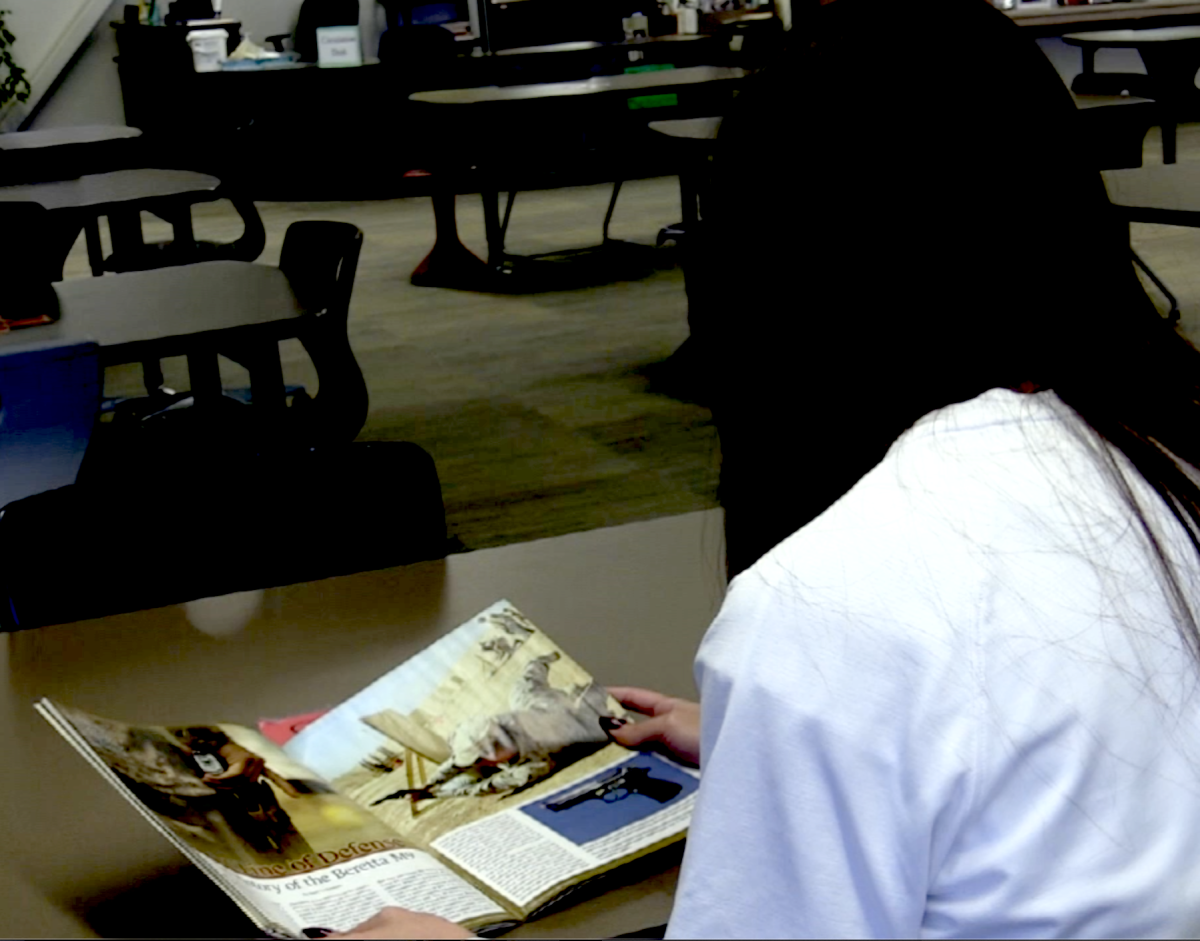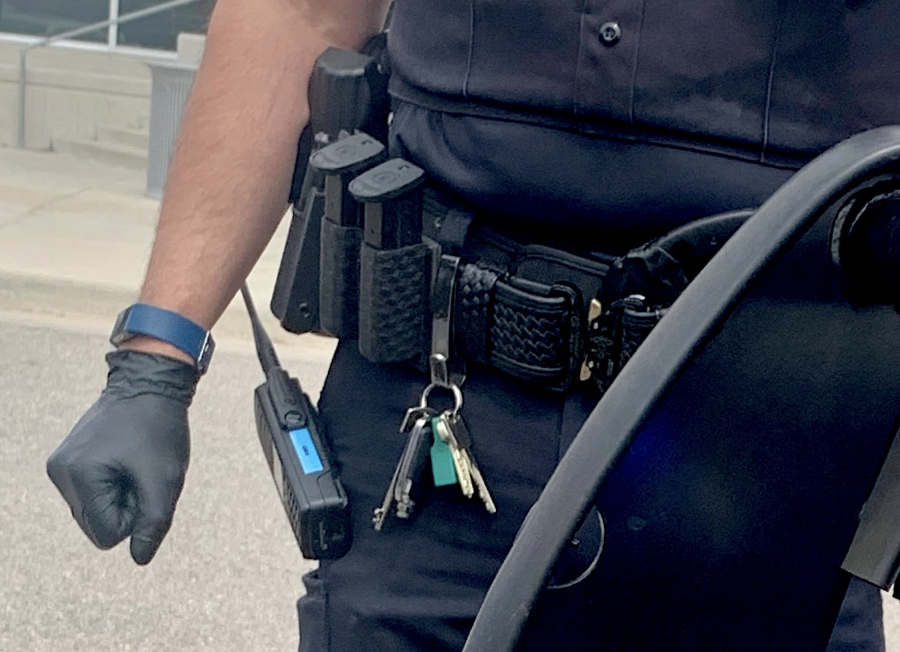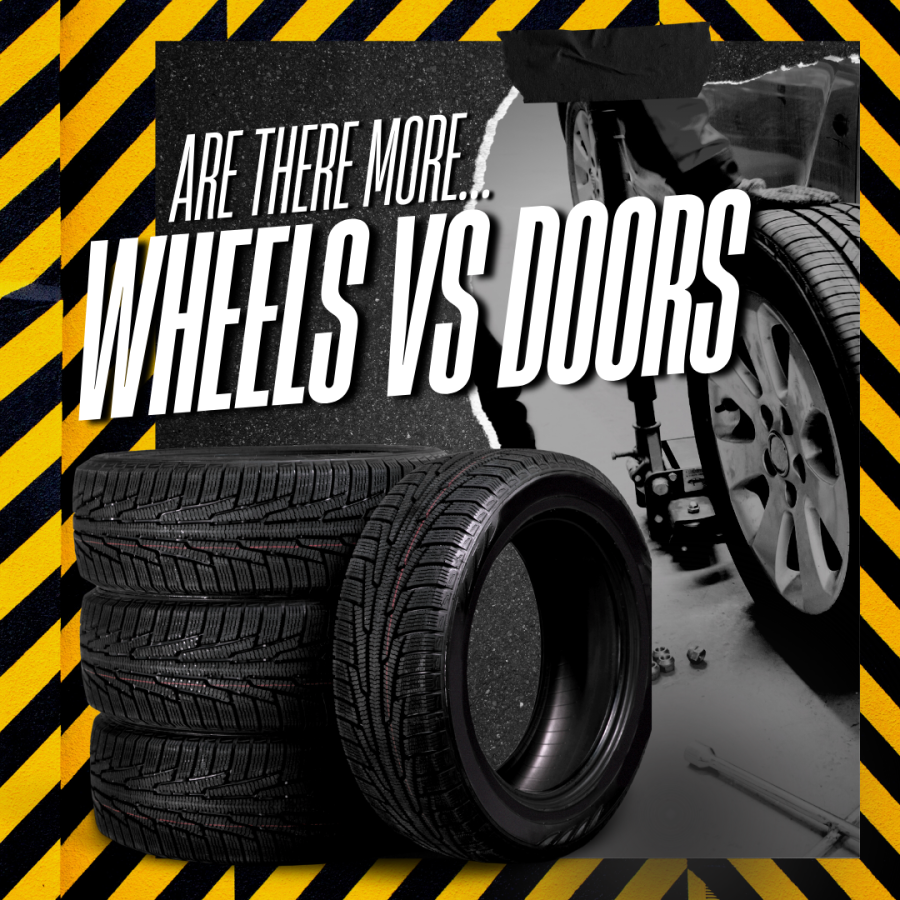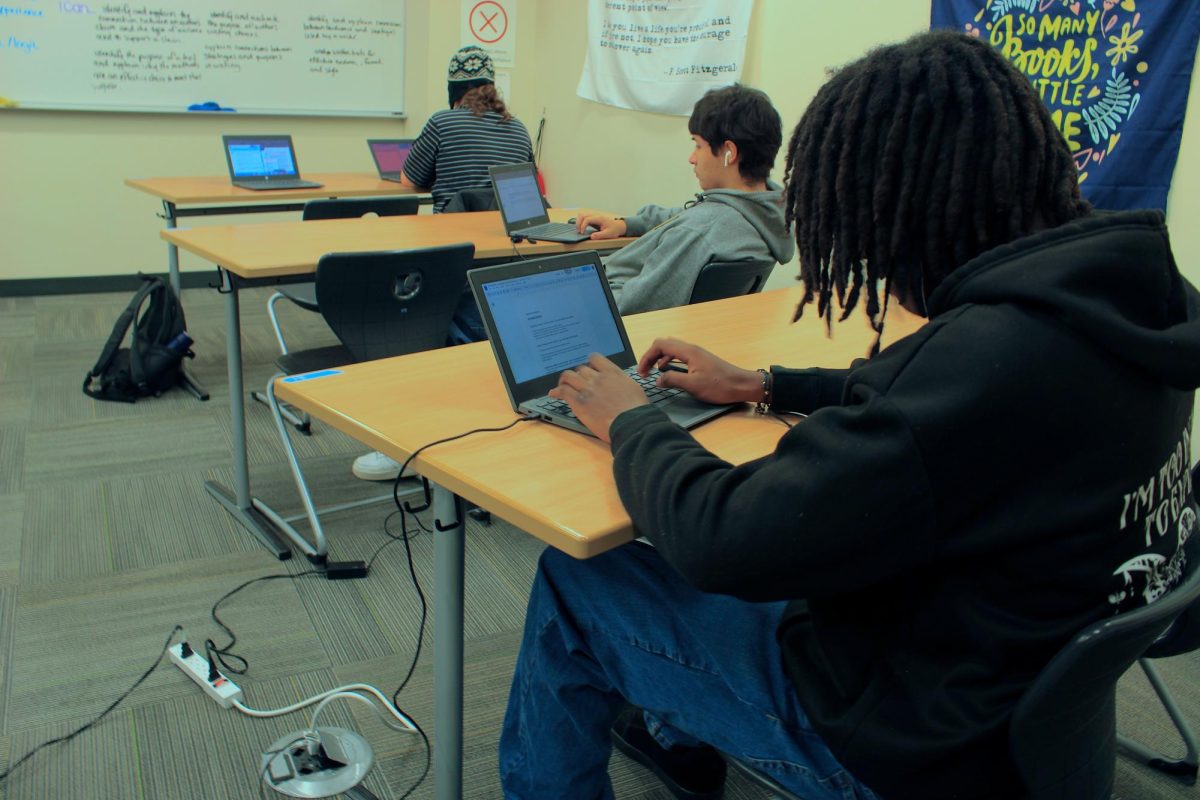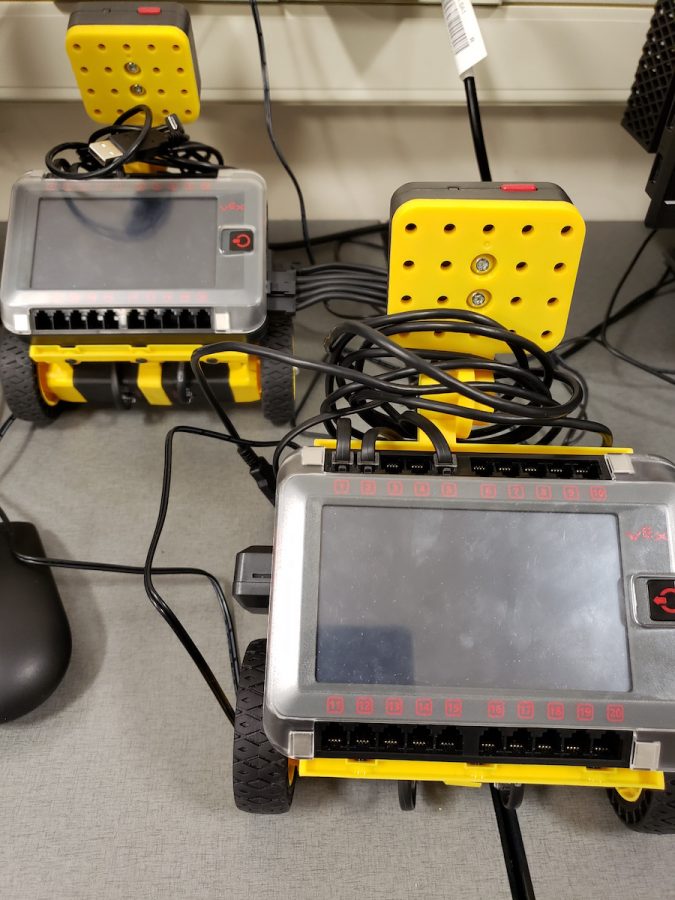Students accelerate into the future with self-driving vehicles
These are examples of the self-driving vehicles being used in Computer Science class. Students code the directions and the cars carry it out.
February 19, 2020
What does the future of driving look like? For some EHS students, the technology of self-driving vehicles is dead ahead.
Freshman Cody Mollick is in the class and explains that students don’t build the car, they add computer coding that teaches the car how to behave, “We’re using
vex-code right now and we use different algorithms.”
Computer science teacher Erika James is teaching students how to program the cars, “It’s important to learn about this particular piece of technology because it currently exists in our world, we’re interacting with it in one way or another.”
James says we can interact with this technology on a day-to-day basis, “Self-driving vehicles can refer to things like a Roomba, the vacuum, or it can refer to an actual vehicle. So those are kind of things that we see on a regular basis in our day to day lives. And it’s important to know how they work and how they can improve our lives or it can maybe impact it for the worse.”
One of the pieces students learn is the navigation systems which can be very complicated, “This week we started with dead reckoning. It is the navigational system. So if you looked at a start and endpoint on Google Maps, that gives you directions. How to get from point A to point B, and that is how they are programming their self-driving vehicles.”
James says that it has many benefits, “They’re able to look at the technology and see the benefits to our society, or the negative impacts that might have. We had a conversation about shuttles that are driverless. They go at a low speed in high population areas, but we were also considering pieces of information on how it might impact existing drivers. Those drivers will no longer have a job. So how does that impact things like the economy? And then a self-driving vehicle can also, in its autonomous piece, takes the human equation out in the event of an emergency. So that’s also a negative. It can be depending upon how you look at it.”
Senior Nicholas Eaves wrote a report about self-driving vehicles, “So I had a little bit of involvement with self-driving cars, and the fact that I had to do a little research article on its effects on society, and whether it be culturally economical. I found self-driving cars, while a very novel idea, is not only very expensive to produce, but also a lot of fault lies in the design of the cars themselves, such as there are sensors in the car. That predicts like what’s going to happen in the next few seconds, but due to the chaotic nature of the road. Those sensors can’t predict everything.”

